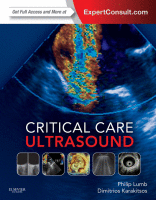Physical Address
304 North Cardinal St.
Dorchester Center, MA 02124

Overview Standard central venous access performed with the “blind” technique was historically based on the puncture of two central veins (the subclavian vein and the internal jugular vein), but ultrasound (US) guidance has expanded the spectrum to at least four…

Ultrasound-guided vascular access (UGVA) was introduced in the preceding chapter. This chapter highlights a few tips for novices as well as additional techniques and innovations that would assist skilled operators in definitively identifying the target vessel and improving catheterization in…

Overview Central venous access is a core skill for anesthesiologists, intensivists, acute care physicians, and surgeons. It is indicated for fluid and drug administration, dialysis, and cardiovascular monitoring. More than 5 million central venous catheters (CVCs) are inserted annually in…

Background Venous thromboembolism (VTE) is a spectrum of disease that encompasses both deep venous thrombosis (DVT) and pulmonary embolism (PE). It is a serious and often underrecognized condition in critically ill patients that can lead to significant morbidity and mortality.…

Procedural and diagnostic vascular ultrasound applications are essential in the intensive care unit (ICU). This chapter presents a synopsis of arterial disorders, whereas evaluation of venous thrombosis and ultrasound-guided vascular procedures are presented in Chapter 9, Chapter 10, Chapter 11,…

Overview Neurocritical care patients often require hemodynamic monitoring to optimize cerebral blood flow and brain tissue oxygen delivery. Hemodynamic monitoring also aids in the management of usual coexisting disorders, such as acute lung injury and acute respiratory distress syndrome (ARDS),…

Overview Multipurpose ultrasound systems offer a variety of eye and orbit imaging techniques relevant to critical care. Bedside ocular ultrasound can be used for the following purposes: (1) timely identification of threats to ocular health and vision and prevention of…

Overview As mentioned in preceding chapters, transcranial Doppler (TCD) ultrasonography is a noninvasive technique that uses low-frequency transducers for real-time evaluation of cerebral arteries in adults and in children with a closed anterior fontanelle. TCD has been increasingly used for…

Overview The role of transcranial color coded Doppler (TCCD) in neurocritical monitoring has been illustrated in previous chapters. We will here focus on its use as a confirmatory test in the diagnosis of brain death (BD). The concept of death…

Overview The management of aneurysmal subarachnoid hemorrhage (aSAH) and its accompanying sequelae integrates transcranial Doppler (TCD) ultrasonography for the surveillance of the emergence and course of vasospasm (VS) and delayed cerebral ischemia. TCD surveillance of patients after aSAH has been…